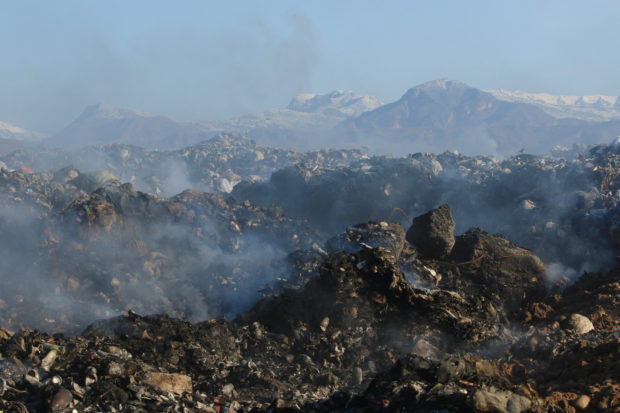Landfills around the world release a lot of methane—study

Garbage is seen collected from an area which used to be a landfill and will be diverted into a green park, in Zakho, district of Dohuk, Iraq January 22, 2020. Picture taken January 22, 2020. REUTERS
LONDON — Decomposing food waste is releasing thousands of tons of planet-warming methane gas at landfills in Buenos Aires, Delhi, Mumbai, and Lahore, new research finds.
With about 570 million tonnes of the greenhouse gas emitted every year from both industrial and natural processes, the concentration of methane in the atmosphere has been increasing at a record pace, according to the U.S. National Oceanic and Atmospheric Administration.
In some countries, the biggest source is agricultural fields and farm animals — particularly cows but also livestock and chickens. In the United States, the oil and gas industry is largely responsible.
Yet there is another major global source – garbage.
With data from a satellite-mounted detector showing high methane levels over cities in India, Pakistan and Argentina, a team of scientists looked more closely to pin down the emissions sources.
Article continues after this advertisementHigh-resolution satellite images snapped in 2020 revealed the methane was coming from upwind landfills in the Argentine capital of Buenos Aires, the Indian cities of New Delhi and Mumbai, and Pakistan’s second-largest city of Lahore, according to the study published Wednesday in the journal Science Advances.
Article continues after this advertisementA landfill in Mumbai, for example, was putting out about 9.8 tons of methane per hour, or 85,000 tons per year, according to the study’s findings. The Buenos Aires landfill emitted some 250,000 annual tons – or half of the city’s total methane emissions.
“These observations can tell us where the large methane emissions are and where mitigation action can be taken,” said co-author Joannes Maasakkers, an environmental scientist at the Netherlands Institute for Space Research. Mitigation steps might include food composting or capturing the methane for biogas.
Landfill waste – responsible for about 11% of global methane emissions – is expected to increase about 70% by 2050 as the global population continues to climb, according to the World Bank.
Because methane is 80 times more powerful than CO2 over a 20-year period, reducing “methane emissions now … can have a quick impact on climate change,” Maasakkers said.
In the past, estimates of landfill emissions were made based on landfill volume and assumed rates of decay.
Satellite technologies are a boost to scientists, said Jean Bogner, a University of Illinois environmental scientist not involved in the research. This new approach helps to “adequately capture site-specific emissions, which for landfills can vary by orders of magnitude” depending on everything from soil conditions to whether mitigation measures are in place.
RELATED STORIES
Landfills only worsen garbage woes, Aquino told
Methane: The other gas warming the planet
WB readies incentives for landfills
When waste isn’t wasted: How an Indonesian city turned garbage into electricity